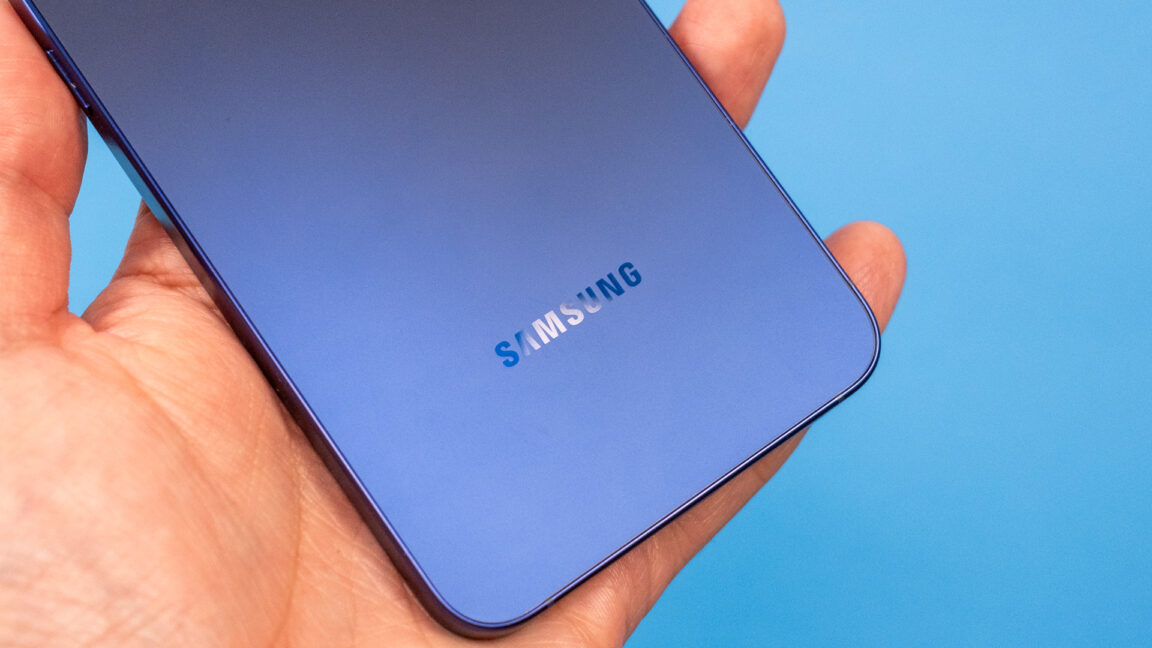Amazon Prime Video’s ad-supported tier has continued to evolve, intensifying the viewing experience with more frequent commercials for subscribers. What started as a measured move to attract price-conscious viewers has progressed into a noticeably higher ad load, even as the service maintains its emphasis on improving ad relevance and user experience. The shift comes amid broader industry moves toward hybrid models that blend subscription dollars with advertising revenue, and it raises questions about how much ad time viewers will tolerate while still finding value in a bundled Prime subscription. This trend matters not only for Prime Video users but also for advertisers who rely on Amazon’s vast reach to connect with a broad, engaged audience across streaming and related platforms.
Prime Video Ad Load: How the model has changed since launch
Prime Video’s ad-supported tier was introduced as part of a broader restructuring in early 2024, when Amazon rolled all Prime Video subscribers onto an ad-supported option unless they opted for a higher-priced, ad-free tier. At the time, the ad-supported plan was positioned as delivering fewer ads than traditional linear television and other streaming providers, aiming to balance revenue with a reasonable viewer experience.
Since that inception, the frequency of ads has visibly shifted. Current reporting indicates that Prime Video is delivering an average advertising load of roughly four to six minutes per hour to subscribers. This range marks a clear increase from the service’s initial ad-load expectations at launch, which were described in some contemporaneous industry briefings as two to three-and-a-half minutes per hour. The measurement of ad load comes from conversations with multiple ad buyers and internal documentation that Audiences and trade publications have cited, reflecting an evolving strategy rather than a fixed standard.
Amazon has publicly framed the approach around prioritizing ad innovation over simply increasing the number of ads. In communications to advertisers, the company has emphasized a continued investment in ad experiences—such as new formats and capabilities—over volume. Specific initiatives cited by the company include Brand+ features, broader integration with Complete TV, and the ongoing development of new ad formats designed to deliver greater relevance and improved customer experiences. The statement underscored that these innovations are intended to benefit both customers and advertisers, signaling a strategic shift away from raw ad counts toward smarter, more targeted delivery.
For subscribers, the practical implication is that ad breaks may arrive more frequently than some users originally anticipated, creating a viewing rhythm that blends entertainment with promotional content. While the overall ad load remains in a middle tier when benchmarked against other streaming services and traditional television, the cumulative impact is noticeable—especially as viewers encounter more commercial opportunities during routine Prime Video viewing sessions.
How the ad load is measured and interpreted
The measurement of ad load in streaming platforms like Prime Video is a nuanced process that depends on sampling from inside media buying ecosystems and internal performance metrics. Industry observers note that the reported four-to-six-minute-per-hour figure is indicative of typical sessions observed by a subset of advertisers and agencies. Viewers who binge a dozen episodes in a single sitting may experience longer continuous ad blocks than those who consume content in shorter, staggered sessions. The interpretation of these numbers can vary based on factors such as the mix of programming, the presence of mid-rolls versus pre-rolls, and the way Prime Video executes ad pacing across a given title.
From a buyer’s perspective, even modest increases in ad density can translate into more opportunities for targeting and contextually relevant placements. The push toward more ad opportunities in Prime Video’s system has been described by industry professionals as a deliberate expansion to broaden the set of available impressions, while still aiming to maintain a perceived value for the viewer through improved ad relevance and smoother integration with the viewing experience.
The subscriber landscape: ad-supported reach and engagement dynamics
Prime Video publicly claims a substantial subscriber base, with tens of millions of users referred to as viewers or subscribers within the Prime ecosystem. A notable portion of these users are enrolled in ad-supported plans as part of Prime memberships, while others purchase standalone subscriptions for Prime Video that include ads or opt for ad-free access at a higher price point. The pricing structure currently reflects several options:
- Prime membership at $15 per month or $139 per year includes Prime Video with ads. To view without ads, subscribers can upgrade to an ad-free tier for an additional monthly fee.
- A standalone Prime Video option is also available, offering a version with ads at a lower price and a higher-priced ad-free variant without ads.
This multi-tiered approach gives Amazon room to expand ad-supported reach while preserving the incentive for some users to pay for an ad-free experience. The numbers around how many Prime Video subscribers actually embrace the ad-supported model versus the ad-free option have been the subject of industry discussion, as consumer behavior evolves and more viewers remain in the Prime ecosystem for reasons beyond streaming alone.
A substantial portion of Prime Video’s audience is believed to be acquired through Prime subscriptions, which broadens the service’s reach but does not necessarily translate into heavy Prime Video viewing. In other words, some percentage of these users may not engage with Prime Video content regularly, or at all, which can dampen the perceived value of advertising impressions tied to that audience. In practice, this dynamic creates both opportunities and challenges for advertisers: more overall subscribers can imply a larger potential audience, but the actual eyeballs for Prime Video ads depend on how diligently users engage with Prime Video content and how often they access the app.
Industry commentary highlights a recurring theme: while Prime Video may have more subscribers than many other ad-supported streaming services, not all those subscribers are watching enough content to yield uniform, high-frequency attention. In this environment, increasing the ad load can help balance revenue objectives with the realities of viewer engagement, particularly if the platform can sustain high rates of ad relevancy and creative resonance that capture attention without driving unnecessary fatigue.
The ad-subscription split and geographic considerations
Prime Video’s stated subscriber numbers include a large global audience, with particular emphasis on the United States where a significant share of subscribers resides. The service has claimed hundreds of millions globally, with roughly 150 million of its users designated as ad subscribers and a substantial majority of those—around 130 million—located in the United States. The implication drawn by analysts is that the ad load and the corresponding ad revenue potential is driven, in part, by a sizable U.S. audience that participates in the ad-supported tier. However, the overall effectiveness of this model hinges on how many of these subscribers actually engage with Prime Video content frequently and across a breadth of titles, rather than subscribing purely to gain access as part of the Prime package.
This geographic nuance matters to advertisers who calibrate campaigns around regional consumption patterns and the likelihood that an ad-supported Prime Video user in a given market will see or respond to an ad. Advertisers and programmatic buyers point out that the presence of many ad subscribers can help unlock scale, but the quality and depth of those impressions—measured through viewability, completion rates, and engagement—are equally crucial to achieve a desirable return on investment.
Industry context: how Prime Video’s ad strategy stacks up against competitors
To understand Prime Video’s place in the broader streaming-ad landscape, it helps to benchmark its ad load against competing platforms and traditional television. Prime Video’s current average of four to six minutes of ads per hour places it firmly in the middle tier when viewed alongside other streaming services and linear television. For example, Netflix is reported to run roughly four to five minutes of ads per hour on its ad-supported tier, according to industry outlets. Max has been cited as delivering around six minutes per hour in some internal tests, while Peacock has demonstrated five to seven minutes per hour in testing scenarios.
Linear television historically averages considerably higher, with 13 to 16 minutes of ads per hour, a disparity that underscores the different monetization models across TV and streaming. Prime Video’s position in this spectrum reflects a strategic choice to maintain a balance: enough ad density to support ad revenue and justify the ad-supported tier, while preserving a tolerable viewing experience that does not alienate subscribers who seek value through lower-cost options or ad-free experiences.
This context underscores why Prime Video’s ad strategy remains a focal point of discussion among advertisers and industry watchers. A core question is whether Prime Video’s ad load will continue to ramp up through 2025 and beyond, especially given the company’s historical stance that ads have not driven away subscribers. If the ramp continues, it could push Prime Video further into a more advertiser-friendly territory, with corresponding shifts in how advertisers plan campaigns, measure impact, and optimize creative for streaming environments.
The role of ad innovations in sustaining growth
Prime Video’s continued investment in ad innovation—rather than simply increasing ad volume—appears central to its strategy for sustaining growth while appeasing both viewers and advertisers. In communications to the advertising community, Prime Video has highlighted ongoing product enhancements and new formats designed to improve relevance and viewer experience. These include expansions in targeting capabilities, stronger alignment with brand safety and measurement standards, and formats that integrate more naturally within the viewing experience.
Industry observers have noted that this emphasis on innovation aligns with broader trends in digital advertising, where the value of an impression increasingly depends on context, relevance, and user experience. The goal for Prime Video is not only to increase the number of ad impressions but to ensure that those impressions are meaningful and engaging for viewers who may be treated to multiple ads during a single session. For advertisers, this approach can translate into higher engagement rates and better recall if the ad experiences feel less intrusive and more aligned with the content being watched.
Viewer experience and advertiser value: balancing act in a growing ecosystem
From a consumer perspective, increased ad frequency can alter the rhythm of streaming sessions, particularly for viewers who use Prime Video as a primary source of entertainment. The push toward four-to-six-minute ad loads per hour raises questions about fatigue and perceived value, especially among subscribers who have already paid for access through their Prime membership or the standalone Prime Video option. The challenge for Amazon is to ensure that ads remain relevant and non-disruptive while still delivering tangible benefits to advertisers and the broader platform ecosystem.
On the advertiser side, the expansion of Prime Video’s ad opportunities can provide more room to experiment with creative formats, audience segmentation, and cross-media integration. The growth of formats and features—such as Brand+ and broader TV-style advertising—offers the potential to create more immersive and contextually aligned campaigns. However, success in this space depends on maintaining viewer trust and ensuring that advertising does not degrade the perceived value of Prime Video as part of the Prime subscription.
The content-ads relationship and viewer willingness
A key dynamic in streaming ad strategies is the relationship between content quality and ad tolerance. When ads are well integrated into programming—matching the tone, pacing, and genre of the content—viewers may be more willing to accept advertisements as a natural part of the streaming experience. Conversely, aggressive ad insertion can lead to fatigue and reduced engagement, which can undermine both immediate ad performance and long-term subscriber retention.
Prime Video’s approach appears to prioritize relevance, with its ad-tech ambitions aimed at delivering more precise targeting and better alignment with viewer interests. While this can enhance the effectiveness of campaigns, it also increases the responsibility to deliver a high-quality user experience. In this context, the platform’s emphasis on ad innovations—rather than volume alone—signals an intent to balance advertiser objectives with viewer satisfaction and long-term platform health.
Implications for advertisers, platforms, and future growth
As Prime Video navigates a landscape where ad-supported streaming is becoming more prevalent, advertisers must adapt to a more nuanced ecosystem. The expansion of ad formats and the potential ramp-up in ad load suggest greater opportunities for reach and targeting, but also heightened expectations for measurement, viewability, and creative optimization. Advertisers may need to adjust their budgeting strategies, shifting more investment toward formats and placements that align with Prime Video’s evolving capabilities and audience behavior.
From the platform perspective, Prime Video’s strategy emphasizes sustainable monetization and improved consumer experiences. The company’s commitment to innovation is a signal to advertisers that Prime Video intends to remain competitive by offering advancements in targeting, measurement, and creative possibilities. The ultimate objective is to cultivate a pipeline of high-quality, relevant ads that resonate with viewers while delivering meaningful revenue growth for Prime Video and its broader parent ecosystem.
Strategic outlook for 2025 and beyond
With 2025 already underway as Prime Video contemplates continued growth, observers expect that the platform will press forward with its ad-load ramp while simultaneously refining user experience. The balance hinges on several factors: the continuing expansion of its ad formats and features, the ability to deliver relevant and engaging ads, the rate at which subscribers convert to ad-free plans, and the overall performance of Prime Video as part of the broader Prime ecosystem. If the company maintains a steady emphasis on ad innovation and customer-centric improvements, it may be able to sustain ad revenue growth without triggering a mass exodus of subscribers who prefer ad-free experiences.
Analysts also point to the potential impact on advertisers’ expectations. As Prime Video’s ad inventory grows more sophisticated, advertisers may increasingly demand stronger measurement signals, better attribution across devices, and tighter alignment with content branding. This evolution could lead to more integrated campaigns that blend streaming ads with other Amazon ad products, creating a cohesive ecosystem where ads feel less intrusive and more synergistic with the user’s digital journey.
Conclusion
Prime Video’s ad-supported tier has become a focal point in the ongoing evolution of streaming monetization. The service has shifted from an initial, comparatively lighter ad load to a more robust presence of four to six minutes of advertising per hour, a level considered mid-range when benchmarked against competing platforms and traditional TV. This trajectory aligns with Amazon’s broader emphasis on ad innovation and enhanced user experiences, rather than solely increasing the number of ads shown. The company points to new formats and features—designed to improve relevance and engagement—as the keystones of its strategy to sustain growth while delivering value for both customers and advertisers.
The subscriber landscape shows a mix of ad-supported Prime Video users and those who opt for ad-free access, with a substantial portion of Prime Video’s audience drawn from Prime memberships that may not engage with the service consistently. This dynamic makes the ad load a balancing act: it needs to deliver scale and monetization without compromising viewer satisfaction or triggering subscriber churn. As Prime Video continues to ramp up ad opportunities and refine its ad formats, the platform is likely to influence how advertisers plan campaigns in streaming, across devices, and within the broader Amazon advertising ecosystem, while viewers weigh the daily trade-offs between price, access, and commercial interruptions.
The year ahead holds the potential for Prime Video to deepen its ad-tech capabilities, experiment with creative formats, and further align its ad strategy with viewer expectations and content trends. If the emphasis on relevancy and experience continues to outpace volume, Prime Video could strengthen its position as a leading ad-supported streaming option, delivering meaningful opportunities for advertisers and value for subscribers who remain comfortable with a controlled level of advertising within their Prime experience.



